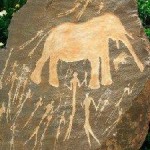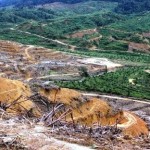
Lanjigarh / Bhawanipatna – Kalahandi has always captured the national imagination, but never for the right reasons. Recurring poverty deaths and reports about entire communities surviving on mango kernels defined this predominantly tribal district in southern Orissa for decades.
So when the London-listed, Indian-run miner Vedanta Plc. announced plans in 2002 to set up a Rs. 4,000-crore bauxite refinery and bauxite mining project in the district’s Niyamgiri Hills, there was a feeling in New Delhi and Bhubaneswar that Kalahandi was finally climbing on to the development bandwagon.
“A big company was coming to Kalahandi… It would make the district into something like Kolkata or Mumbai. That’s how we felt then,” said local journalist Mahamad Ashlam.
Eight years on, Ashlam is a disappointed man. It is a feeling shared by Kalahandi’s elected representatives, people living near the refinery, the local middle class and the business community. The company, too, says it is disappointed because the refinery can break even only if the state government acts on its promise to let it mine in the bauxite-rich Niyam Dongar mountain.

Vedanta wants the flat-top mountain massif, the best-forested in the Niyamgiri hill range, but the local Dongria Kondh tribals say it is the abode of their god Niyam Raja. The surreal fight between the $12.3-billion mining firm and tribals facing extinction has already drawn parallels with James Cameron‘s blockbuster film, ‘Avatar’.
The David-versus-Goliath battle has drawn in a variety of actors – from tribals to environmentalists to politicians to non-government organizations. Even the Church of England waded into the controversy, selling its stake in the company last February to protest the company’s allegedly poor human rights record.
The battle is being fought against the back-drop of raging Maoist violence in tribal areas across several Indian states, which means a decision on whether to let the company mine the Niyam Dongar will not be an easy one.
The government, increasingly having to reckon with deep disenchantment felt by several tribal communities about the country’s industrialization agenda, will be forced to confront the issue soon. The environment ministry’s Forest Advisory Committee, which advises the government on whether forest-land should be diverted for non-forest use, will meet on April 16, after which it will submit its recommendations to the ministry to take the final call.

Source: The Economic Times News Release dated April 13, 2010.














